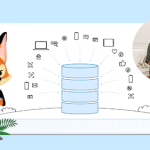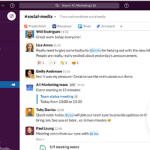This year’s Salesforce Live: India gave us an exciting glimpse into How the Future Works. Customer Trailblazers revealed how they’re reimagining customer and employee experiences for a new world. Industry luminaries discussed how business can be a powerful platform for change. And Salesforce leaders showcased how new innovations in technology are helping companies thrive from anywhere.
What’s clear is that post COVID-19, business playbooks around the world are being rewritten. Success is increasingly about doing well and doing good. That means:
- Delivering unforgettable customer experiences
- Building a digital headquarter for a work-from-anywhere world
- Prioritising employee safety
- Committing to net zero – now.
Against this backdrop, here’s what we learned at Salesforce Live: India:
1. Customers want to be wowed – and Salesforce Customer 360 helps you do that
To succeed today, every business has to be customer-first. That’s why we created Salesforce Customer 360 – to unify sales, service, marketing, and commerce teams around the customer – so that they can make every customer interaction incredible.
With Customer 360, Vedantu is wowing students and parents by making their experiences across touchpoints seamless. The edtech firm has built a unified view of each student on Salesforce. So, teams are able to have more contextual student conversations, and intervene at the right places to improve learning outcomes. Creating impact at scale never looked so good.
2. Innovation isn’t just about new products – it’s also about new customer experiences
Products, no matter how innovative, can be copied quickly. Experiences, on the other hand, can be a powerful differentiator. The more personalised your service, or the faster you respond to customer queries, the more loyal your customers are likely to be.
With Salesforce, HDFC Limited is delivering exceptional customer service. Agents have complete visibility into each customer’s loan history, documents, follow-ups, and other relevant data – all on a single screen. So, they’re able to resolve customer queries faster and smarter.
Collaboration across teams is also simple because everyone is connected on one platform. Together, they’re making it easier for customers to fulfill their dreams of owning a home.
Meanwhile, Asian Paints has been innovating with customer experiences for years. They’re already known for their category-creating products. Now they’re using technology to close the gap between their teams and customers. For example, with AI/ ML, they’re uncovering insights about what customers want, faster. This is helping them forge stronger relationships, and build products that customers love.
3. Everyone benefits from digital transformation – not just large enterprises
COVID-19 changed the game, making digital transformation an imperative for organisations of all sizes, across all industries.
Leading the way for mid-sized companies is Gemini Power Hydraulics. The technology-first manufacturer has invested heavily in digitalisation to re-invent business processes, and offer customers maximum value at every step.
With technologies like Salesforce, they’ve broken down information barriers and organisational silos. So, cross-functional teams can work together more efficiently to create frictionless customer journeys.
The company has also automated business processes, resulting in a 60% boost in sales productivity, as well as a 10% improvement in service productivity.
Next up? Company-wide digitisation to achieve even stronger business process orientation.
4. The business of business is to improve the world
Gone are the days when businesses would focus solely on shareholder profit. Our purpose today is to serve all our stakeholders – including customers, partners, employees, and communities. That’s how we can create a more equitable future for all.
For inspiration, look to Meghshala Trust. The non-profit is transforming India’s education system at scale by empowering its heart – teachers. Through their flagship app, Meghshala provides innovative teaching kits filled with images, videos, activities, and strategies. This helps teachers convert classrooms into active learning spaces.
As we continue to navigate 2022 and beyond, climate change remains our single biggest challenge. Sonam Wangchuk – noted engineer, educationist, and environmentalist – highlighted three steps businesses can take to protect the planet.
First, ensure that everyone in the organisation – from the leadership team downwards – internalises the urgency of climate action. Second, practice sustainability not just within your business but across all your engagements, including the supply chain. Finally, remember that every effort to mitigate climate change counts.
This year, we at Salesforce introduced sustainability as our fifth core value. With 1t.org – we’ve pledged to plant more than 43.5 million trees globally, of which 1 million will be planted in India. We’ve also launched Net Zero Cloud to help businesses track and reduce their carbon footprint faster.
At the end of the day, Salesforce is more than just a business – we’re an economy of trust powered by 15 million Trailblazers worldwide. And in a year of ongoing disruption, the impact we’ve had on job creation has been a real highlight. According to IDC, the Salesforce Economy will contribute 9.3 million jobs and $1.6 trillion in economic impact worldwide. In India, that translates to almost 1.3 million new jobs with an economic impact of $66.4 billion.
This kind of growth is made possible only through collaboration and community – through people coming together as they did at Salesforce Live: India to discuss how we can build dynamic, thriving businesses.
Our heartfelt appreciation to the Salesforce community for making Salesforce Live: India a truly memorable experience. Thanks also to everyone who tuned in, posted on social media, and engaged in our virtual sessions.

























